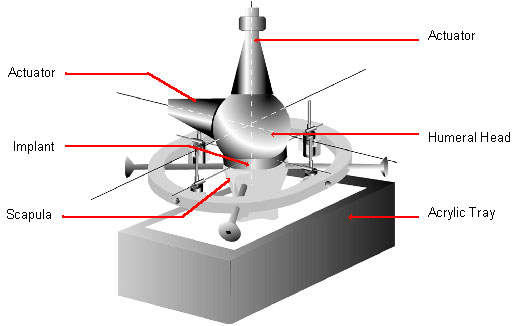|
|
The loss of fixation between implant and bone is a common
problem in joint arthroplasty and remains the most frequent cause of implant
failure. Different fixation modalities of implant to bone are being
investigated, including advanced techniques of cement fixation in the elbow, and
the use of stems to stabilize the glenoid implant of the shoulder. In addition,
we are developing new methods to achieve occlusion of the intramedullary canal
prior to cement delivery. We have explored in detail the fixation of the glenoid
component in shoulder arthroplasty with special interest in the influence of
keel fixation and polyethylene thickness.
Cross-sections of specimens prepared in the
laboratory showing the effect of cement delivery techniques for fixation of the
stemmed (humeral) implant in elbow arthroplasty. On the right is a specimen
prepared using hand-packing of cement; on the left is the result achieved when
cement is delivered using advanced cementing techniques. The latter achieves a
more uniform distribution of cement, enhanced apposition to bone and improved
interface strength.
This schematic illustrates an in-vitro test set-up to
measure the relative motion of the glenoid component (of a shoulder replacement)
to bone for various loads applied to a metal sphere (representing the humeral
head). Studies to date have examined the effect of implant thickness, keel size,
screws and cement.
|

